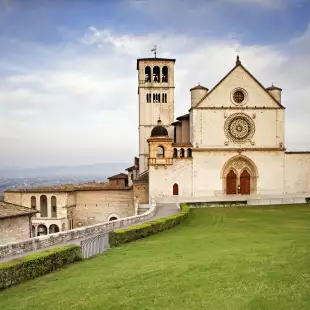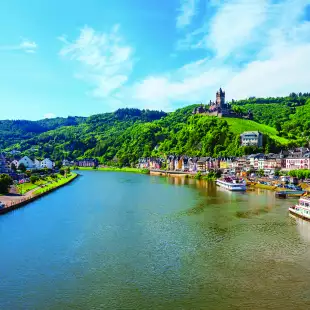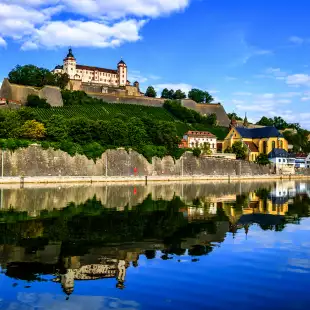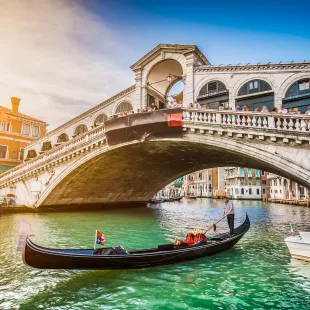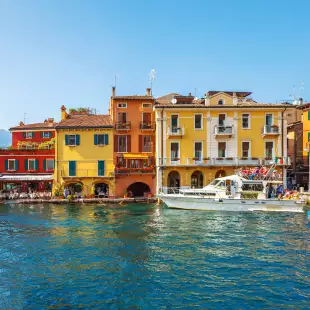The 10 Most Famous Cathedrals and Basilicas Across Europe

Discover some of Europe’s most famous cathedrals and basilicas in cities such as Barcelona, Cologne and Seville.
Barcelona, Cologne, Milan and Seville – some of Europe’s most exciting cities are also home to famous cathedrals, churches and basilicas. These impressive sacred buildings are well worth seeking out if on a holiday to Spain, a tour of Italy, or indeed on any European trip.
With their magnificent spires, awe-inspiring architecture and wealth of ecclesiastical art, famous cathedrals and basilicas across Europe are unsurprisingly steeped in religious history. These places of worship – some centuries old – are wondrous sights to behold, regardless of your spiritual beliefs, and will surely be a highlight of any holiday.
TIP: If you’re wondering why some churches are known as cathedrals and others as basilicas, the answer lies with their function. A cathedral is the principal church of a Catholic diocese – effectively the home church of the bishop or archbishop of that diocese. Basilicas are high ranking churches that are designated by the Pope as such because they carry special spiritual, historical or architectural significance.
Europe’s Most Famous Cathedrals
St Peter’s Basilica, Vatican City, Italy
The largest basilica in Europe, St Peter’s is considered one of Roman Catholicism’s holiest sites. It’s the final resting place of the first Pope, Apostle Peter, as well as 91 others. Marvelling at Michelangelo’s dome and standing in the famous St Peter’s Square will undoubtedly be highlights of a Classical Italy tour. However, if time allows, join the long queue to go inside to see the basilica’s treasured Pieta sculpture. Entrance is free, though there’s an admission charge for The Vatican Museums.

Sagrada Família, Barcelona, Spain
If visiting Barcelona on a holiday to Spain, don’t miss the chance to visit the splendid Sagrada Família. One of the city’s most famous landmarks, the UNESCO World Heritage Site is a basilica like no other, with both Art Nouveau and Gothic architecture featuring on its unique exteriors. The church is still incomplete. Although architect Antoni Gaudí started the project in 1883, construction work is not due to end until 2026, when its finished spires will make it the tallest church building in the world.

Cologne Cathedral, Cologne, Germany
The tallest cathedral in Europe when it was completed in 1880 (it’s now in fourth place), Cologne Cathedral towers over the German city. It’s a prime example of Gothic architecture and a must-see UNESCO World Heritage Site if on a Rhine river cruise. Head up to the top of the South Tower for far-reaching views, though take note that there are 533 steps. En route you’ll pass the bell chamber that houses St Peter’s Bell. Weighing 24 tonnes, it’s the largest swinging church bell in the world.

Milan Cathedral, Milan, Italy
One of the biggest cathedrals in Europe, Milan’s magnificent Duomo is a glorious sight. Taking almost six centuries to build, it’s the largest Gothic cathedral in Italy and has 135 marble spires, a similar number of gargoyles, 55 stained-glass windows and an astonishing 3,400 statues. A golden image of Mary, the Madonna, stands atop the highest spire. The views from the cathedral rooftops are spectacular, too, and there’s a lift to get you there. Visit as the sun sets when Milan takes on a pretty pink hue.

Hagia Sophia, Istanbul, Turkey
Our list of famous cathedrals also has to include Hagia Sophia, a must-see on any holiday to Istanbul. Thought to be almost 1,500 years old, the imposing building with its dome and minaret towers has been a Greek Orthodox Christian cathedral, a mosque, and is home to a museum today. It’s much admired for its outstanding Byzantine mosaics, in vibrant shades of gold, red and yellow, but perhaps even more remarkable is that Hagia Sophia has survived hundreds of earthquakes, making it a truly revered sight.

St Stephen’s Cathedral, Vienna, Austria
Time spent in Vienna will be a highlight of a holiday to Austria or Danube River cruise, especially if you visit the capital’s exalted St Stephen’s Cathedral. With its decorative, eye-catching tile roof and underground catacombs, Vienna’s famous cathedral is said to be where Beethoven discovered he was deaf. Despite being near the enormous Pummerin bell, the composer could not hear it ringing. Austrian Mozart worshipped at St Stephen’s Cathedral too, and it was the place of both his wedding ceremony and funeral service.

Seville Cathedral, Seville, Spain
The Cathedral of Saint Mary of the Sea, or Seville Cathedral, is the third largest cathedral in Europe, a UNESCO World Heritage Site and an unmissable attraction if exploring Andalucía on holiday in Spain. One of the most ornate religious buildings in the world, the immense cathedral is home to a beautiful gold leaf altar depicting the life of Jesus, as well as the supposed tomb of Christopher Columbus. Note that there are no stairs to climb to the top of the bell tower; the horse-friendly Torre Giralda has ramps instead.

St Stephen’s Basilica, Budapest, Hungary
Another St Stephen’s, this time in Budapest. This famous basilica was named after King Stephen, the first king of Hungary. It’s the largest church in Budapest, accommodating 8,500 people and is often on the itinerary of a Danube River cruise. The church is considered one of Hungary’s most important religious buildings. Its most sacred relic – a mummified right hand kept in a glass case – is thought to belong to St Stephen himself. Interestingly, the dome is 96 metres high – the same height at the nearby Budapest Parliament Building.

St Mark’s Basilica, Venice, Italy
St Mark’s Basilica is one of the world’s best-known examples of Byzantine architecture, and instantly recognisable to all travellers on holiday in Venice. Standing proudly in St Mark’s Square, it can be clearly seen from the city’s Grand Canal. Inside you’ll find a stunning 12th-century marble floor, a gem-studded golden altarpiece and over 8,000 square metres of mosaics. Many feature accounts of St Mark’s life, as well as his dramatic return to Italy from Egypt when his body was allegedly stolen by two Venetian merchants.

Notre Dame, Paris, France
No list of famous cathedrals would be complete without mentioning Notre Dame. However, Paris’s iconic landmark has made the headlines recently for all the wrong reasons. Badly damaged in April when it was engulfed by fire, the cathedral’s roof and 850-year-old spire were sadly destroyed and now those on a holiday to France can only admire its former grandeur from the outside. However, more than £500 million has already been raised for the cathedral’s restoration, and the French president is confident that Notre Dame will be rebuilt within five years.
Plan Your Trip And Step Inside Europe’s Famous Cathedrals
As you can see, famous cathedrals are found in cities throughout Europe, in popular destinations easily visited on escorted tours and European river cruises. Where will you choose to explore next? There’s certainly plenty of options.
If you have any questions, please do not hesitate to contact us.




